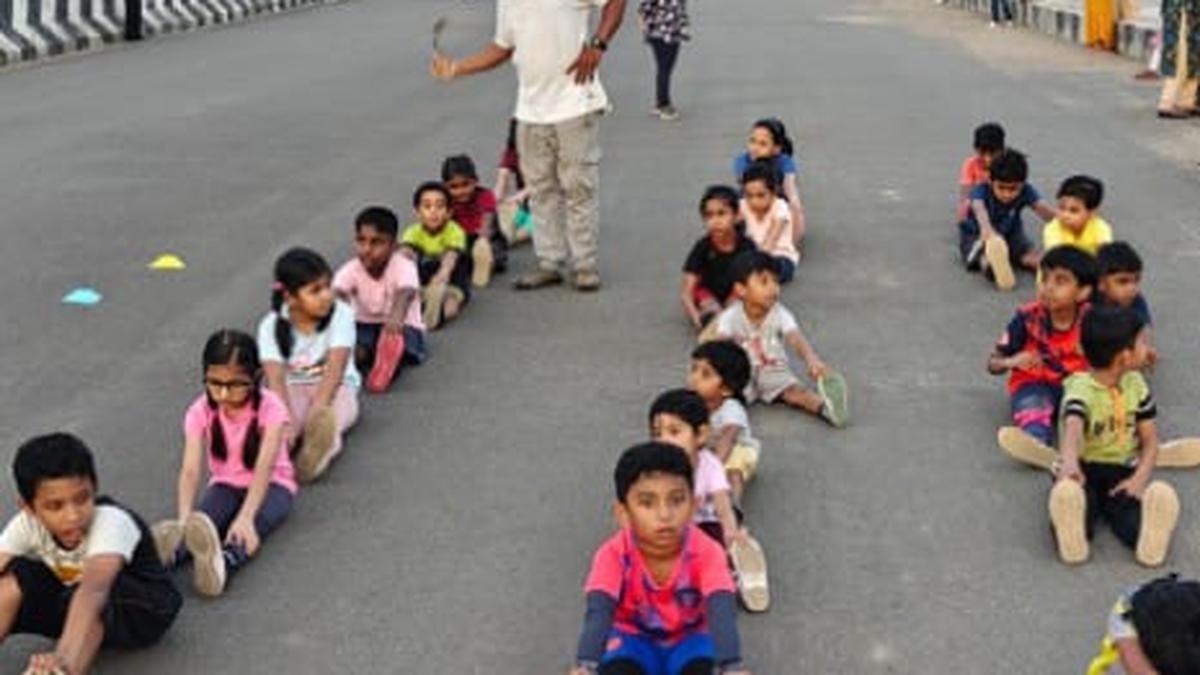By Gcc Commissione
Copyright thehindu

Recently Greater Chennai Corporation Commissioner J. Kumaragurubaran in a post on X shared a video of children practising skating on the MRTS road between Perungudi station and Velachery station.
GCC, in coordination with Greater Chennai Traffic Police, will make the road impervious to motorised vehicular traffic for a few hours every day for skating and cycling, he announced in the post. Currently, “heavy vehicle arresters” have been fixed and a few leftover works are to be completed on this stretch.
While this should come as good news for academies scouting for ideal locations to train children in skating, seeing it implemented is far from easy. This road has been used by young learners even before the pandemic for the minimum hindrance it presents.
Complaints by motorists when an entire carriageway of the road elsewhere is made out of bounds for them have meant that skaters have to scout for new location all over again. Manpower challenges in the police department to regulate such stretches mean this sport takes a backseat.
Three popular stretches sought by skating enthusiasts and training academies for road skating are: service lane on Marina Beach, near Light House; carriageway of Swami Sivananda Salai near MLAs Hostel; and Elliot’s Beach Road in Besant Nagar.
R. Pratap Kumar, president of Tamil Nadu Roller Skating Association, says despite many requests by the association none of these roads is officially given for practice sessions.
“Before major competitions, we manage to get permission but that is not enough. Sports needs regular practice and a dedicated place that is accessible and affordable to all,” says Pratap.
Skating academies only seek 1.5 to 2 hours in the morning hours to practise this sport. “The stretch has to be barricaded and police officials should patrol the stretch; volunteers will take care of the rest,” says Pratap, who was former Tamil Nadu State Information Commissioner.
Of the 11 disciplines in skating, ‘road’ is one of them which is why a city needs to provide the infrastructure. A tar surface is preferred over a cemented one.
“In December, Chennai will be hosting the 63rd National Roller Skating Championship but we have only taken six disciplines. As we do not have the infrastructure for ‘road’ and ‘rink’ category, these events will be held in Bengaluru,” he says.
Other cities
Chandigarh, he says, is one of the best when it comes to road infrastructure for skating. “Many medal-winning skating aspirants go to cities such as Chandigarh and Bengaluru to practise before a meet as they have dedicated stretches,” he says.
R.M. Anbunathan, a skating coach for more than two decades, agrees that finding an ideal location is a challenge and many a time they practise in neighbourhoods till residents raise an objection.
Currently, Anbunathan has managed to get permission from a senior police official to occupy 700 metres of the road at Swami Sivananda Salai in the morning between 5 a.m. and 7 a.m.
“Before we could do a full circuit of Swami Sivananda Salai covering 3.7 km. Now, 700 metres is what is permitted,” says Anbunathan who runs the Marina Academy of Speed Skating.
Skating coaches say Tamil Nadu is currently one of the top states in skating. Chennai District Unit is one of the biggest in roller skating in Tamil Nadu, and Chennai district holds many National and International medallists. There are more than 20 registered clubs, so to ensure this momentum is maintained the State government must accord importance to the sport.
“There are at least eight events in the road category in skating including 100 mt, marathon, lap race, so we need affordable and safe space,” says the senior coach.
Arrangements should be made to support road skating wherever sports infrastructure is coming up in the city.
Two skating facilities promoted by private players in Medavakkam and Gerugambakkam are being accessed by many skating enthusiastics. While they are maintained well with good infrastructure, distance and the cost of availing the facility discourages many from adopting them.